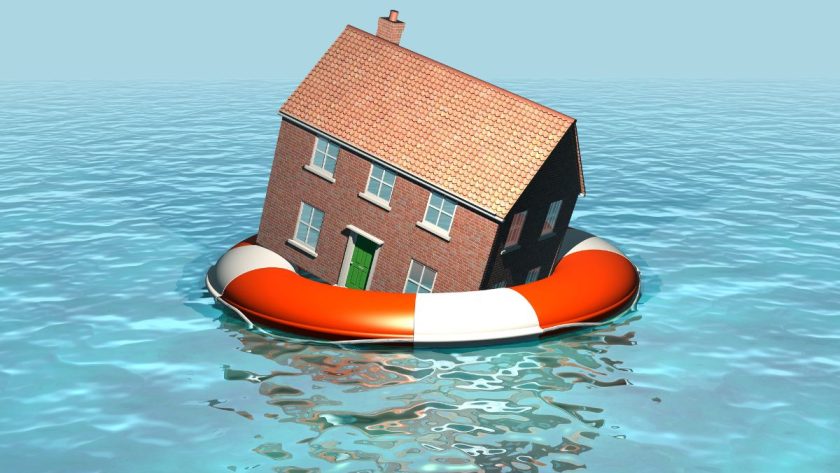Climate change could cost the Western U.S. as much as $3.2 billion yearly in flood damage. That’s the latest estimate published in 2022 by the University of California. Even worse, that figure is about three times higher than the projection they made in 2019.
There’s no way to prevent the weather events that cause natural floods. However, it’s possible to mitigate the damage they cause through flood watch monitoring. After all, this is how the National Weather Service (NWS) advises the public of a flood possibility.
But why exactly should you keep an eye out for flood watch reports? What do they mean, and how can they help protect you, your loved ones, and your property?
Below, we’ve listed all the reasons you should heed flood-related notices, so read on.
Gives You Time to Prepare for Possible Floods
A flood watch is an advanced notice of a possible incoming flood. The NWS issues this when weather conditions are favorable for flooding.
When there’s a flood watch for your area, it doesn’t guarantee flooding will occur. However, it indicates the possibility of one due to heavy pouring rain.
The NWS typically issues flood watches 12 to 48 hours before possible flooding. You can then use this time to prepare yourself, your family (including pets), and your home. For example, you can prep your flood survival kit, move to higher ground, or evacuate.
Notifies You of Potential Flood Hazards
A flood watch alerts you to the possibility of flood hazards, such as sweeping water. Two feet of this is enough to lift and carry a small vehicle away. So if it’s powerful enough to do that to cars, imagine what it can do to smaller objects.
Another flood hazard is the potential of floodwater spreading infectious diseases. They can occur due to sewage-contaminated floodwaters. Exposure to them can lead to conditions like E. coli and Salmonella infections.
Floodwaters can also contain hazardous chemicals like gasoline, diesel, and heavy metals. Exposure to them can result in skin, respiratory, and systemic toxic effects.
Floods can also uproot trees, roll boulders, and cause catastrophic landslides. Their impact can be enough to cause severe injuries, even death.
Because of those possible effects, it’s imperative to be aware of potential floods. A flood watch, issued hours before potential flooding, can help make you aware of such dangers.
It Can Become a Flood Warning
Another critical reason to keep an eye out for a flood watch is that the NWS can upgrade it to a flood warning. That can happen if there’s high confidence that a flood will occur.
If you get a flood warning, it can indicate an imminent flood. However, it can also mean that a flash flood is already occurring.
Flash floods are the most dangerous, as they can happen quickly, even in only a few minutes. Unfortunately, that’s also why sometimes, there is not enough time to send a flood warning.
Flash floodwaters move at extreme speeds capable of dislodging boulders. They can also tear out trees, obliterate bridges, and topple walls. They can do all that since they can reach heights of 10 to 20 feet.
Areas at risk of flash floods are those near streams, rivers, and other bodies of water. Likewise, places with dense populations, canyons, and valleys can also experience flash floods. Even areas with dry soil can suffer from flooding due to intense rainfall.
That’s also why flood insurance for rental property, homes, and offices in those areas is a must.
However, flood coverage is just as crucial for properties in low-risk flood zones. After all, a slight risk is still a risk, meaning a flood can still occur.
Regardless of your property’s flood risk, continuously monitor flood watches.
Flood Incidents Are Becoming More Common
All U.S. states and territories experience flooding. However, such catastrophic events have become more common and intense.
Rising sea levels are among the culprits behind increased flood frequency and severity. Indeed, ocean water now floods coastal cities even only during high tides. So, even without heavy rains, these places get inundated.
Climate change and global warming, in turn, contribute to rising sea levels. They’re also factors in the increased intensity of weather events. For instance, they cause storms to be more severe, which then leads to more extreme flooding.
Since floods can intensify every passing minute, it’s vital to know in advance if your area will get hit by one. That’s reason enough to track flood watches and listen to the warnings they provide.
Crucial to Reducing Flood Damage and Safety Risks
Even just one inch of floodwater inside flooded homes can already cause $25,000 of damage. Unfortunately, many floods are so high they can bring several feet of water into your home.
If you’re unaware of possible floods, you won’t be able to protect your home’s contents. You may even get trapped inside your house when the floodwaters come.
On the other hand, if you monitor flood watches, you’ll know immediately if your area is at risk. Thus, it can prompt you to move some of your most expensive belongings to a higher place.
You also have time to turn off your home’s electrical system before a flood occurs. Doing so helps minimize the risk of electrical shocks and injuries. Remember: water and electricity never mix; if they do, they can be deadly.
Knowing if there’s a possible flood may also give you enough time to set sandbags around your home. A sandbag wall acts as a shield against floodwater. It diverts floodwaters around instead of through your home.
Stay Safe Through Flood Watch Monitoring
Please remember that floods cause the most fatalities out of all weather-related incidents. For example, flash and river floods, on average, claim nearly a hundred lives in the U.S. each year. They also cause billions of dollars in property damage and medical costs.
So, for your, your family’s, and your property’s safety, always keep an eye out for flood watch reports.
For more home safety and improvement guides like this, check out our latest news and blog posts!





